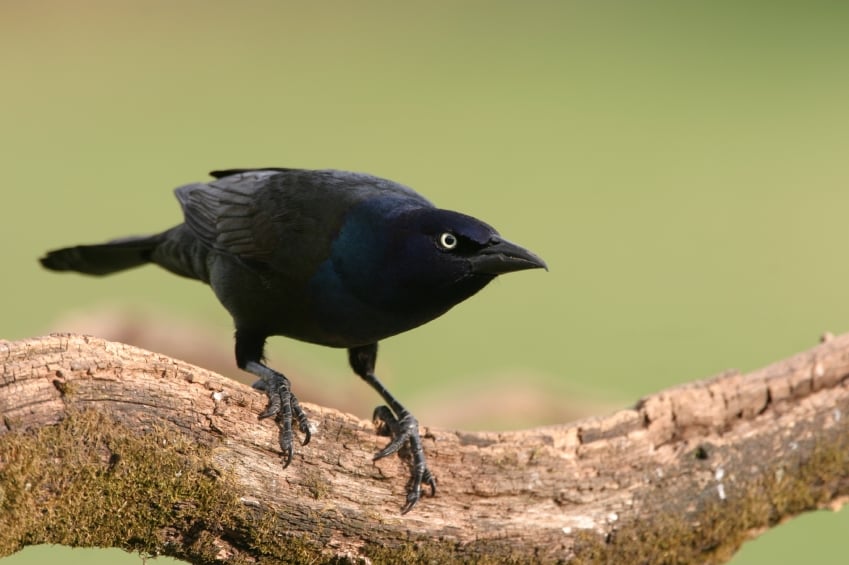Quiscalus quiscula
So you live in the northeast and would rather not have Common Grackles hogging the feeders in early spring and again in the fall. Compare your plight to folks in the lower Mississippi River valley where winter nighttime roosts of grackles can number over one million birds! Consider our farming friends who can lose a significant portion of their crops (corn, rice, and peanuts are particular favorites) to these voracious omnivores. There are some strategies that you can employ to moderate their impact on your backyard bird feeding program.
But first let’s look at the bird. Common Grackles are large blackbirds with yellow eyes, iridescent plumage, and a long, keel-shaped tail. They can be found throughout the eastern three-quarters of the United States and much of southern Canada during breeding season. In winter, they migrate from the northern half of their range into the southern states. Northeasterners typically see the most grackles in March and April. Once nesting begins, grackles are more focused on plentiful invertebrates and other foods. Again, in fall as they prepare to move south, grackles may reappear at feeders.
How can you host a few annual visitors without having your favorite feeder birds chased away and your feeders emptied by marauding flocks of Common Grackles? Use some of the strategies for attracting particular groups of seed-eating species in reverse. Take size as an example. Grackles are large birds that feed comfortably on open platform feeders and directly on the ground. The distances between perches and seed ports on most tube feeders are awkward at best for grackles. Nyjer tubes are impossible for them. You may need to remove seed trays from these feeders temporarily as they are designed for two purposes: to catch spilled seed and to allow larger birds to feed.
Perch-less feeders designed for chickadees, titmice, and nuthatches are also difficult for grackles to use. These types of feeders will continue to attract songbirds whether grackles are present or not.
If you have platform feeders, take them down for a few weeks in the spring. Use a ground tray with a wire cage over the top that allows the native sparrows to feed but excludes grackles. Keep spilled seed on the ground raked up. Are spring grackles attacking your suet cakes? Suet holders that allow access only from the bottom are no problem for the woodpeckers and arboreal birds, but exclude grackles.
Other feeder types also work to select the diners. Feeders surrounded by wire cages are one choice. A number of the squirrel-resistant feeders on the market have weight adjustments that will close the seed ports under the weight of larger birds, but remain open for smaller species.
While you interact with the mixes and feeder types in your yard during periods of grackle invasions, don?t forget to enjoy the interesting behavior of these conspicuous birds. Be sure to catch the metallic hues of purple, green, and blue in their feathers. Understand that we get to influence the activity in our yards, but we cannot totally control who visits. And take heart that at least in the northeast, Common Grackles are temporary visitors.
Reference
Peer, Brian D. and Eric K. Bollinger. 1997. Common Grackle (Quiscalus quiscula), The Birds of North America Online (A. Poole, Ed.). Ithaca: Cornell Lab of Ornithology.
